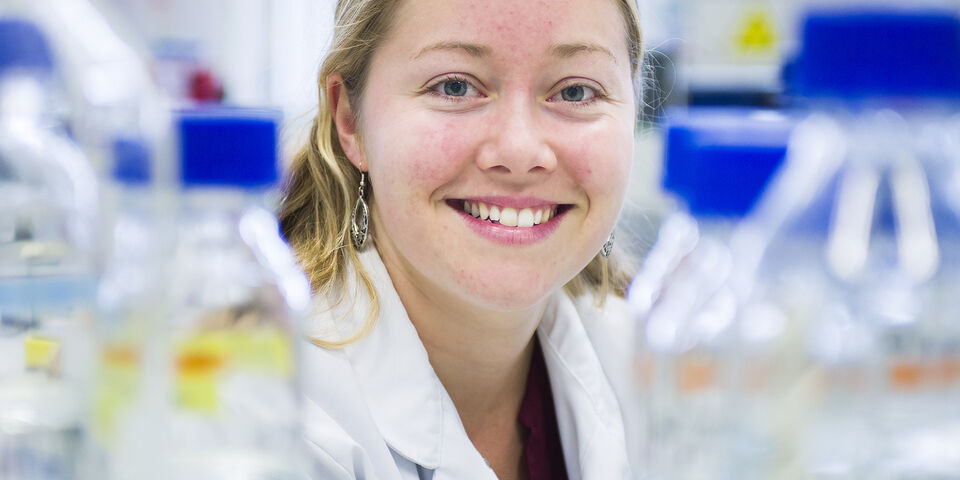The heart can pump blood through the rhythmic contraction of cardiac muscle cells in unison. To perform their function well, these cells are embedded in a supporting network of fibers, the so-called extracellular matrix, which is maintained by another type of cells, called fibroblasts. In order to determine the impact of the extracellular matrix and fibroblasts on the functioning of the cardiac muscle cells, PhD candidate Ariane van Spreeuwel brought these three components together in the lab.
“You can take cells out of a mouse heart and put them in an incubator together with collagen fibers and some other proteins”, Van Spreeuwel explains. The incubator is a kind of hatcher for cells, in which temperature, air composition and humidity of the body are mimicked. After a few days this results in the spontaneous genesis of a piece of tissue that starts to show contracting movements: it is ‘beating’. It is as if a tiny cardiac muscle has formed, though without blood vessels and nerve cells.
Van Spreeuwel adds that such pieces of tissue – but then with human cells – are used in particular to test medicines for side effects. “Then they screen how healthy cardiac tissue reacts to the medicine, whether it causes arrhythmia, for instance. I, on the other hand, have examined diseased tissue, in which the cardiac muscle cells are not all properly aligned along the same axis, for instance, as in a healthy heart, but are more in disarray.”
She spent many hours behind the microscope
In order to be able to see how such abnormalities influence the contraction of the cardiac tissue, the PhD candidate engineered the pieces of tissue in such a way that they got stretched between a number of flexible anchoring points. By measuring the flexion of those anchoring points under the influence of the contracting muscle cells, she was able to determine the tensile force and the frequency of the contractions. This meant that she spent many hours behind the microscope, for those tissue fragments, which have a diameter of less than a millimeter, can hardly be seen with the naked eye.
Van Spreeuwel watched what happened when she positioned the anchoring points in such a way that the cardiac muscle cells were forced into different orientations, and added extra collagen fibers and fibroblasts. In this way she tried to mimic circumstances that may occur after a myocardial infarction, for example, or in case of other cardiac diseases. “It turns out that the disruption of the extracellular matrix has less effect than adding fibroblasts. As soon as the number of those cells increases too much, the frequency of the contractions decreases drastically.” Her conclusion is that in the treatment of cardiac diseases, the restoration of the balance between cardiac muscle cells and fibroblasts - for instance by injecting stem cells - should get priority.


Discussion